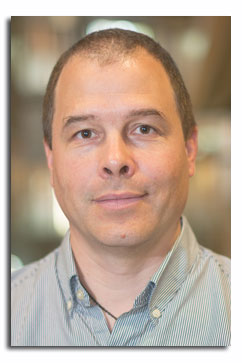
Abstract
For ultrasmall Si nanovolumes (Si-NVs) such as Silicon (Si) nano crystals (NCs), wires, wells and FETs in sub-22 nm technology nodes for Ultra-Large Scale Integration (ULSI), impurity doping is a major challenge to achieve required electronic device properties.
After a brief assessment of literature data illustrating mentioned challenges, I will present own theory and experimental results from hybrid Density Functional Theory (h-DFT), Atom Probe Tomography (APT) and X-ray Absorption Near Edge Structure (XANES) spectroscopy which elucidate the reasons for impurity doping to fail.
As first alternative, I show that Si dioxide (SiO2) and nitride (Si3N4) create substantial energy offsets of electronic states in ultrasmall Si-NVs. h-DFT, interface charge transfer and experimental verifications arrive at the same NC size below which the embedding dielectric dominates their electronic properties. I describe the interface impact as nanoscopic field effect and show that the energy offset is very robust and controllable. As application example, I propose an undoped CMOS-able and CMOS technology-compatible Si-Nanowire MISFET.
Modulation doping of the embedding Si-based dielectric in another alternative to impurity doping of ultrasmall Si-NVs. I will report on modulation-doping of aluminium gallium nitride (AlxGa1-xN) barrier layers adjacent to Si-rich Si3N4 by excess Si in-situ with the segregation anneal for Si NC formation. Material properties and process compatibility of AlxGa1-xN render it suitable as barrier for Si nanodot superlattices. I present h-DFT calculations which show that Ge also works as donor in AlN, extending the material range to Ge nanodots in Si3N4.
Finally, I will present a glimpse on preliminary results of modulation-doped SiO2 and its application to HIT solar cells. These results show that combining excellent field effect passivation with high carrier selectivity and conductivity can be achieved within one material which is superior to ultrathin amorphous Si as used in current HIT cell technology.
Click here to see all available video seminars.
Click here to go to the SPREE HOMEPAGE.
Brief Bio
Study of System Theory and Solid state Electronics, Electrical Engineering, Chemnitz University of Technology, Germany and University of Hull, Yorkshire, UK
1997: University Diplom (Dip. Ing. EE) with 1,0 (Top 1st Class Honours)
1997 - 1999: Resarch Engineer, BMBF Project 'Increase of Open Circuit Voltages of MIS Solar Cells', Chair of Electronic Devices, Chemnitz University of Technology, Germany
2000 - 2003: Additional study and work on PhD in Semiconductor and Solid State Physics, Institute of Physics, Chemnitz University of Technology, Germany;
2004: Rigorosum and Defence to Dr. rer. nat. (Ph) on 'Insulator layers (AlF3) With Fixed Negative Charges and Their Application to Si Solar cells', with Magna Cum Laude (1st Class Honours)
2004 - 2005: Post-Doc in Materials Modelling group, Project 'Supercomputer-Based Modelling of Novel Dielectrics for ULSI', AMD Europe, Dresden and Chemnitz University of Technology, both Germany
2005 - 2014: Head of Theory and Characterisation, 3rd generation Strand, ARC PV CoE / SPREE, UNSW, Sen. Res. Fellow from 2010
2015 - : Deputy Director (Research) Integrated Materials Design Centre (IMDC), UNSW and Sen. Res. Fellow, Material Theory and Characterisation, SPREE
